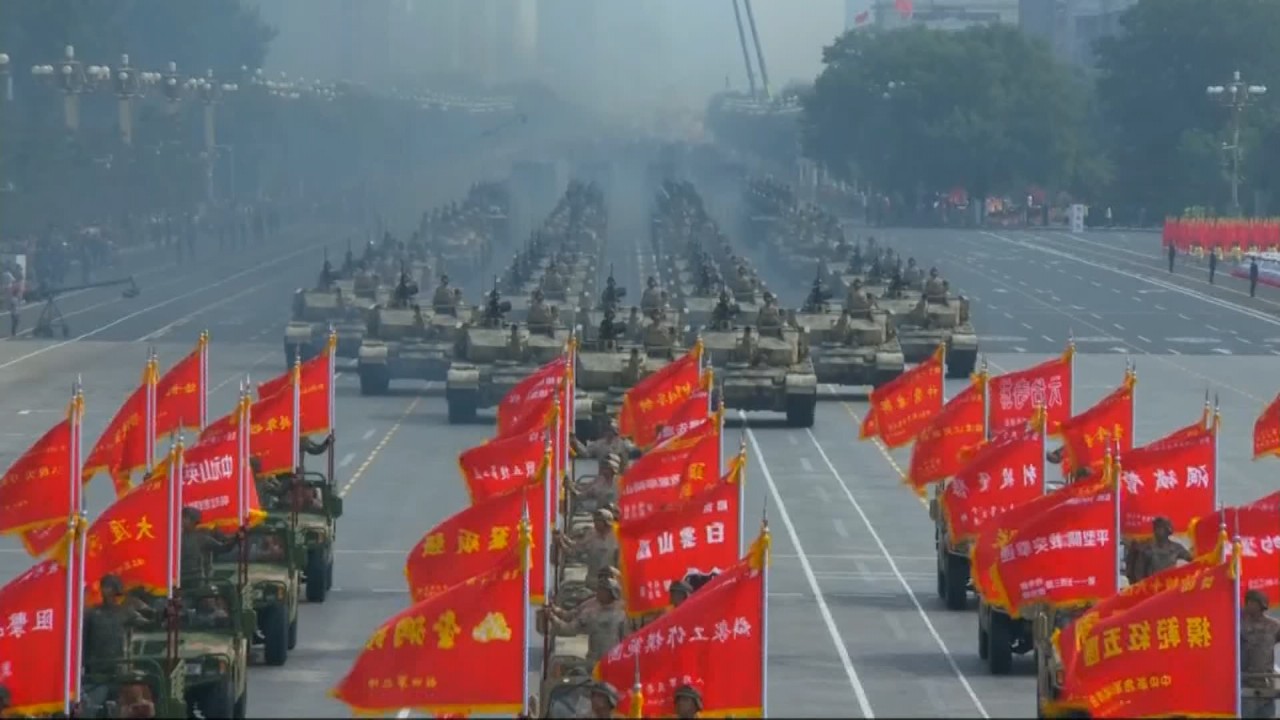
Is China building a vast network of nuclear missile silos?
- Mainland military analysts pour cold water on a recent Washington Post report that said satellite images suggest new facilities were being built in the desert
- Nuclear hawks favour more sea-based weapons and point out that the most advanced land-based ICBM can be launched from a mobile platform
Chinese military observers have dismissed US media reports that China is building a network of nuclear missile silos in its northwestern desert, saying that they would be too vulnerable to attack and the technology involved is obsolete.
A report published by The Washington Post on Thursday said 119 construction sites that resembled existing launch facilities for nuclear-armed ballistic missiles were being built near the city of Yumen in Gansu province.
The report was based on a study of commercial satellite images by the California-based James Martin Centre for Nonproliferation Studies and fuelled speculation that China is seeking to expand its nuclear capabilities.
US State Department spokesman Ned Price described the report as “concerning” and said that “it raises questions about [China’s] intent”.
“I think what is fair to say is that these reports and other developments suggest that the PRC [People’s Republic of China]’s nuclear arsenal will grow more quickly, and to a higher level, than perhaps previously anticipated,” he said.
Top Chinese nuclear scientist dies in fall from building
But Chinese defence analysts dismissed the report as unfounded.
Song Zhongping, a former People’s Liberation Army instructor, said it was far from reliable because the silo technology had long been obsolete.
“China has already used mobile launchers and discarded these fixed silos, which are time-consuming, labour-intensive, costly and vulnerable to be attacked and destroyed,” said Song.
“Having said that, I firmly support the expansion of China’s nuclear power, but the expansion of nuclear power should be prioritised on sea-based nuclear power and land-based nuclear power. And space-based nuclear power also needs to be further strengthened.”
China’s new nuclear submarines have missiles that can hit more of US: analysts
China’s nuclear arsenal, estimated to contain between 250 and 350 warheads, is far smaller than the Russian or American ones and its only silo-launched missile is the DF-5 series, a giant two-stage liquid-fuel intercontinental ballistic missile that first entered service in the 1980s.
The Washington Post report said China had used decoy silos in the past, while the United States had developed a plan to move ICBMs between different silos to keep the Soviets guessing.

03:19
People’s Republic of China celebrates 70th anniversary in Beijing with its largest military parade ever
Jeffrey Lewis, director of the East Asia non-proliferation programme at the Centre for Nonproliferation Studies of the Middlebury Institute of International Studies, told The Washington Post that the silos were “probably intended for a Chinese ICBM known as the DF-41, which can carry multiple warheads and reach targets as far away as 9,300 miles (1,500km), potentially putting the US mainland within its reach”.
The DF-41, which was shown off at a 2019 military parade to mark China’s National Day, is designed to be launched from special trucks but can still be stored in silos.
In 1958 the US ‘considered nuclear strike on China over Taiwan’
“It is possible that Lewis just blurted the nonsense out to the media without even knowing the very basic features of China’s DF-41 at all,” Hu Xijin, the editor of nationalistic tabloid Global Times wrote in a WeChat post.
“The report and Price comment was to use the means of a media campaign to jointly pressure China to make a statement on its nuclear programme and to squeeze the space for China to develop its nuclear power and strengthen its nuclear deterrence.”
Hu also noted that “real silos are often built at the same time as decoy silos, and the actual distribution of silos is the top secret of nuclear powers”.
Zhou Chenming, a Beijing-based military commentator, said that the construction sites shown on the satellite image were too concentrated to be ICBM silos, which would among the first targets of a nuclear attack.
“They would be all destroyed by just one nuclear warhead,” said Zhou, who like Song did not offer an alternative explanation for what the satellite images might show.


